Mouthwatering Street Food in Bangkok: Must-Try Thai Treats
Explore the Flavors of Bangkok's Vibrant Street Food Scene
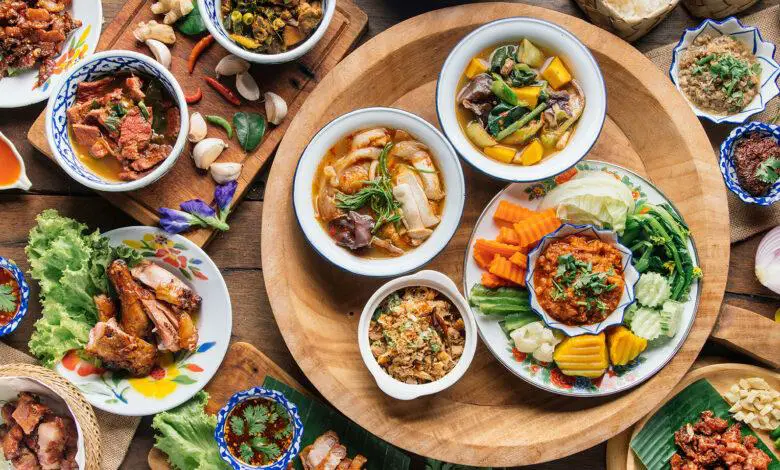
Bangkok, the vibrant capital of Thailand, is a city that never sleeps. While the bustling metropolis offers a plethora of attractions, one of the highlights for any traveler is undoubtedly the street food. In this article, we’ll take you on a culinary journey through the heart of Bangkok, where you’ll find mouthwatering street food that is a must-try during your visit. Get ready to savor Thai treats that will leave you craving for more!
Significance of Street Food in Thai Society
Street food holds immense significance in Thai society, serving as an integral part of the country’s culinary heritage and social fabric. It’s not merely about satisfying hunger; it’s a cultural phenomenon deeply ingrained in the daily lives of Thai people. Here’s why street food matters in Thailand:
Accessibility:
Street food vendors are ubiquitous, found on almost every corner of Thai cities and towns. This accessibility means that people from all walks of life can enjoy affordable and delicious meals without the need for formal restaurants.
Cultural Heritage:
Thai street food represents a fusion of flavors influenced by the country’s rich history and diverse regional cuisines. It’s a reflection of Thailand’s cultural diversity and culinary creativity.
Social Gathering:
Street food stalls often serve as communal spaces where friends and families gather to enjoy meals together. It’s a social experience, promoting bonding and connections among people.
Economic Impact:
Street food is a vital source of income for many Thais, providing employment opportunities for vendors, suppliers, and even the local economy. It supports countless livelihoods.
Preservation of Tradition:
Many street food recipes have been passed down through generations, preserving traditional cooking techniques and local flavors. This helps in keeping Thai culinary heritage alive.
The Vibrant and Diverse Street Food Scene in Bangkok
Bangkok, Thailand’s bustling capital, boasts one of the most vibrant and diverse street food scenes in the world. Here’s a glimpse into the culinary wonders you can find while exploring the streets of Bangkok:
Iconic Dishes:
Bangkok’s street food offers a plethora of iconic dishes such as Pad Thai, Tom Yum Goong (spicy shrimp soup), and Som Tum (green papaya salad). These dishes encapsulate the bold and harmonious flavors of Thai cuisine.
Night Markets:
The city comes alive after dark with vibrant night markets like Asiatique and Talad Rot Fai, where you can sample an array of street food delicacies while shopping for souvenirs and enjoying live music.
Regional Specialties:
Bangkok is a melting pot of regional Thai cuisines. You can savor dishes from different parts of the country, including Northern Khao Soi, Southern Gaeng Som, and Northeastern Isaan-style grilled meats.
International Fusion:
Bangkok’s street food scene is not limited to Thai cuisine. It embraces international influences, offering everything from Japanese sushi rolls to Indian curries, reflecting the city’s cosmopolitan nature.
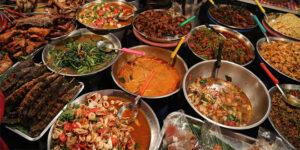
Pad Thai
Describe the iconic stir-fried noodle dish:
Pad Thai is arguably one of Thailand’s most famous street foods, renowned for its delightful blend of flavors and textures. This iconic stir-fried noodle dish typically features flat rice noodles stir-fried with a medley of ingredients. Central to its taste is a balance of sweet, savory, and tangy flavors that make it incredibly appealing to the palate. The primary ingredients usually include rice noodles, shrimp, tofu or chicken, bean sprouts, chives, crushed peanuts, and a vibrant sauce made from tamarind paste, fish sauce, palm sugar, and chili.
Mention popular variations and accompaniments:
While the classic Pad Thai recipe is a favorite, there are several regional variations and accompaniments to explore. Some variations might substitute the protein, such as using prawns, chicken, or tofu. Vegetarian versions are also widely available. Street vendors may offer additional condiments like dried chili flakes, lime wedges, and sugar for diners to customize their Pad Thai to taste. It’s common to accompany this dish with a side of fresh bean sprouts, lime wedges, and a sprinkle of crushed peanuts to enhance its flavors further.
Som Tum (Green Papaya Salad)
Explain the ingredients and preparation:
Som Tum, or Green Papaya Salad, is a quintessential Thai street food known for its refreshing and zesty flavors. It’s prepared using green, unripe papaya that’s thinly shredded and mixed with ingredients like garlic, chilies, fish sauce, lime juice, and palm sugar. Sometimes, small dried shrimp and crushed peanuts are added to enhance texture and flavor. All these ingredients are traditionally pounded together in a mortar and pestle, which imparts a unique texture and releases the flavors. The result is a vibrant, crunchy salad with a spicy and tangy kick.
Discuss the sweet, sour, and spicy flavors:
Som Tum is a delightful balance of sweet, sour, and spicy flavors that tantalize the taste buds. The sweetness comes from the palm sugar, the sourness from the lime juice, and the spiciness from the chilies. The crispness of the shredded papaya provides a refreshing contrast to the intense flavors, making it a perfect choice for those who enjoy a harmonious blend of tastes and textures.
Tom Yum Goong (Spicy Shrimp Soup)
Highlight the distinctive flavors of this famous soup:
Tom Yum Goong is a beloved Thai soup known for its bold and distinctive flavors. It features a rich, clear broth infused with aromatic herbs and spices, such as lemongrass, kaffir lime leaves, galangal, and chilies. The star of the dish is the succulent shrimp, which add a sweet and savory element to the soup. The flavors are characterized by a perfect balance of sourness from lime juice, spiciness from the chilies, and a hint of sweetness from the shrimp.
Talk about the ingredients and its health benefits:
Tom Yum Goong not only excites the taste buds but also offers potential health benefits. The ingredients used in this soup, such as lemongrass and galangal, are known for their antibacterial and anti-inflammatory properties. Additionally, the high content of aromatic herbs and spices may aid in digestion and boost the immune system. The presence of shrimp provides a good source of lean protein and essential nutrients like iodine and omega-3 fatty acids, making it a nutritious choice for seafood enthusiasts.
Mango Sticky Rice
Describe this beloved Thai dessert:
Mango Sticky Rice is a beloved Thai dessert that perfectly balances the sweetness of ripe mangoes with the creamy richness of coconut-infused glutinous rice. The dish features a base layer of warm, sticky rice, which is sweetened with coconut milk and sugar. Atop the rice are slices of perfectly ripe mango, which provide a refreshing contrast to the sweet, slightly salty rice. To finish, a drizzle of coconut cream is often added, elevating the dessert to a delightful level of indulgence.
Mention the seasonal availability of mangoes:
The availability of Mango Sticky Rice is largely dependent on the seasonality of mangoes. In Thailand, mangoes are typically in season from March to June, which is when this dessert is at its peak. During this period, you’ll find street vendors and dessert stalls across Thailand serving up this heavenly treat. However, some restaurants may offer variations with different fruits or preserved mangoes to satisfy cravings year-round.
Satay
Discuss the skewered and grilled meat or tofu:
Satay is a popular Thai street food that consists of skewered and grilled meat or tofu, marinated in a flavorful mixture of herbs and spices. Common choices for the protein include chicken, beef, pork, or even tofu for vegetarians. The skewers are grilled over an open flame, imparting a smoky flavor to the meat. What makes satay special is the marinade, which typically includes ingredients like lemongrass, turmeric, garlic, and coconut milk. The result is tender, juicy skewers bursting with aromatic goodness.
Explain the accompanying peanut sauce:
Satay is often served with a delectable peanut sauce that adds a creamy and nutty dimension to the dish. The sauce is made from ground peanuts, coconut milk, red curry paste, soy sauce, and a touch of sugar, creating a harmonious blend of sweet, savory, and slightly spicy flavors. It’s not just a dip; it’s an integral part of the satay experience. Diners can either dip the skewers into the sauce or pour it generously over the satay for an extra burst of flavor. The combination of tender skewered meat and the rich peanut sauce is what makes satay a delightful Thai street food favorite.
Exotic Delights:
Adventurous eaters can indulge in exotic street food like fried insects, skewered seafood, and even Durian, the infamous “king of fruits.”
Recommend Popular Street Food Markets and Areas
When it comes to experiencing the vibrant and delectable world of street food in Bangkok, you’re in for a treat. The city is renowned for its mouthwatering street cuisine, offering a diverse range of flavors that will tantalize your taste buds. To make the most of your culinary adventure, here are some popular street food markets and areas to explore:
Yaowarat Road (Chinatown):
Bangkok’s bustling Chinatown is a paradise for food enthusiasts. Along Yaowarat Road, you’ll find an array of street vendors offering dishes like dim sum, roasted duck, and delectable seafood. Don’t miss the famous mango with sticky rice.
Khao San Road:
While Khao San Road is famous for its backpacker scene, it’s also home to numerous street food stalls serving up pad Thai, grilled meats, and refreshing fruit shakes. It’s an excellent place to savor Thai street food staples.
Asiatique the Riverfront:
This bustling night market offers a mix of shopping and dining experiences. You can indulge in Thai dishes like som tum (papaya salad), satay skewers, and even international options, all while enjoying the scenic riverside atmosphere.
Or Tor Kor Market:
For a slightly more hygienic and organized street food experience, head to Or Tor Kor Market. Here, you can sample high-quality Thai snacks, fresh fruit, and regional specialties in a clean environment.
Mention the Importance of Hygiene and Food Safety
While Bangkok’s street food is a culinary adventure waiting to happen, it’s crucial to prioritize hygiene and food safety to ensure a safe and enjoyable experience. Here are some tips to keep in mind:
Choose Popular Stalls:
Look for stalls that have a high turnover of customers; this usually indicates that the food is fresh and safe to eat.
Observe Cleanliness:
Pay attention to the vendor’s cleanliness and food handling practices. Clean hands, utensils, and a clean cooking area are essential.
Boil It, Cook It, Peel It, or Forget It:
If you’re concerned about food safety, stick to dishes that are cooked thoroughly or fruits that can be peeled.
Stay Hydrated:
Enjoy the street food, but make sure to drink bottled water to stay hydrated and avoid ice in your drinks from unknown sources.
Navigating Bangkok’s street food scene can be overwhelming for first-time visitors. Here are some helpful tips to ensure you make the most of your culinary adventure:
Learn Basic Thai Phrases:
Learning a few basic Thai phrases like “hello,” “thank you,” and “how much?” can go a long way in making your experience more enjoyable.
Ask Locals for Recommendations:
Don’t hesitate to ask locals for their favorite street food spots. They often know the hidden gems.
Be Adventurous:
Be open to trying new dishes and flavors. Some of the most delicious Thai food can be found at humble street stalls.
Cash is King:
Many street vendors only accept cash, so make sure to have some Thai baht on hand.
Frequently Asked Questions (FAQs)
Q: What are some must-try street food dishes in Bangkok?
A: Some must-try dishes include Pad Thai, Tom Yum soup, Som Tum (papaya salad), Moo Ping (grilled pork skewers), Khao Pad (fried rice), and Mango Sticky Rice.
Q: Where can I find the best street food in Bangkok?
A: The best street food in Bangkok can be found in bustling markets, night markets, and along popular streets like Yaowarat Road in Chinatown and Sukhumvit Road.
Q: Is Bangkok street food safe to eat?
A: Yes, Bangkok street food is generally safe to eat. Vendors use fresh ingredients, and the high turnover of food ensures its freshness. However, be cautious with spicy dishes if you have a low tolerance for heat.
Q: How much does Bangkok street food cost?
A: Bangkok street food is incredibly affordable, with most dishes ranging from 30 to 100 Thai Baht (approximately $1 to $3 USD).
Q: What is the best time to enjoy Bangkok’s street food?
A: The best time to enjoy Bangkok’s street food is in the evening and at night when the street food markets come alive.
Q: Can I find vegetarian or vegan options in Bangkok’s street food?
A: Yes, many street vendors in Bangkok offer vegetarian and vegan options. Look for dishes with tofu, vegetables, or request customization to suit your dietary preferences.
Conclusion
Mouthwatering Street Food in Bangkok: Must-Try Thai Treats is an essential part of your Bangkok experience. From the tantalizing flavors of Pad Thai to the vibrant culture of the night markets, every bite and every moment is a journey of discovery. So, embrace your inner foodie, savor the street-side delights, and immerse yourself in the culinary wonders of this incredible city.
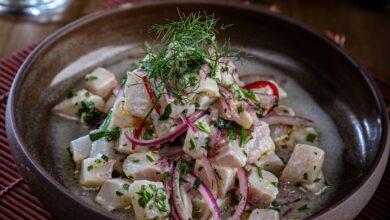

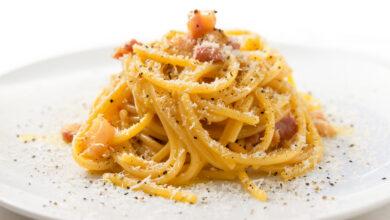
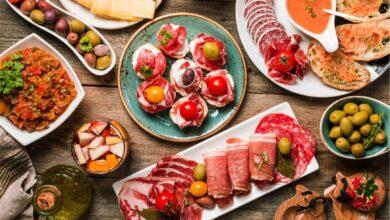
Facebook Comments